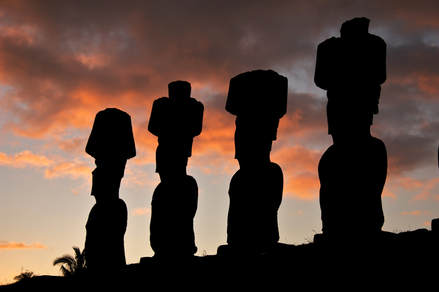Written by John Edward Betancourt Sometimes it’s quite humbling to ponder upon how much mankind has accomplished. We’ve wiped out diseases, been to the moon and discovered so much about our world and our environment that it seems as though, there’s little left to uncover about planet Earth, and we should instead turn our attention to the stars. But that line of thinking is in fact, incorrect. There’s still so much we don’t understand about this tiny blue ball we call home and our lack of complete knowledge when it comes to planet Earth is why I’m so thankful that there are networks out there who continually provide us with documentaries and specials about our planet that motivate and inspire others to seek out the unknown. As it turns out, BBC America is one such network that is all about educating as many people as possible about our world and this summer, teaching us about the wonders of our home is going to be their focus and last night, saw the beginning of a wonderful six-part series about a part of our world that I personally knew very little about, the South Pacific, and well, judging from what ‘Ocean of Islands’ had to offer, it’s clear we are going to be in for quite the treat because this magnificent tale, one narrated by Benedict Cumberbatch for that matter, was loaded to the brim with all kinds of incredible moments and facts. For instance, I learned in this premiere, that these isolated islands are surprisingly interconnected to one another in unique ways. Case in point, I did not have a clue that the cool and temperate waters that surround MacQuarie Island travel an incredible distance to the Galapagos Islands and allow for species that normally thrive elsewhere in the world to survive there. Plus, it was equally as fascinating to learn how cyclones and other such violent storms have managed to bring life to islands that normally wouldn’t see animal and insect migrations thanks to their severe isolation and that these transplanted species have managed to grow and thrive and evolve in ways we never imagined. Yet, while this was fascinating to watch in its own right, I have to admit that I was more impressed with how human beings have also managed to find ways to thrive on islands that are surrounded by the ocean and nothing more. Because there are plenty of communities thriving about the South Pacific and they’ve even managed to influence our world since a harvesting ritual that takes place on Penecost Island helped to invent bungee jumping and then there are the good people of Anuta Island, who have figured out how to live in perfect harmony with the world that surrounds them for generations now, and I found it fascinating how they only take just enough when it comes to their resources, in order to ensure that future generations can enjoy the same way of life and their lifestyle serves as a lovely bookend to the Rapa Nui’s story, wherein their greed and desire to outdo one another led to deforestation and disaster on Easter Island since they consumed every resource available in that place, leaving only those mysterious statues behind. What’s amazing however, is that this is merely the highlight reel of what this episode had to offer and there was just so much packed into this single hour that I’d likely need several blogs to cover everything featured here. Heck, I could write a few thousand words on the wonder of the Coconut Crab alone when one considers how amazing their tale turned out to be in this episode. But I digress, and instead implore you to check this series out as soon as possible. Because it’s inherently clear that the South Pacific is a place of great beauty and wonder and we all need to take the time to learn more about this remote part of our world and I’m honestly looking forward to discovering more about these islands and I have no doubt that I’ll be staring at the screen with awe in the weeks to come as this documentary reveals all the majesty that the South Pacific has to offer. Until next time.
0 Comments
Leave a Reply. |
Archives
April 2025
|
|
© 2012-2025, Nerds That Geek LLC.
All Rights Reserved. |
uWeb Hosting by FatCow

 RSS Feed
RSS Feed